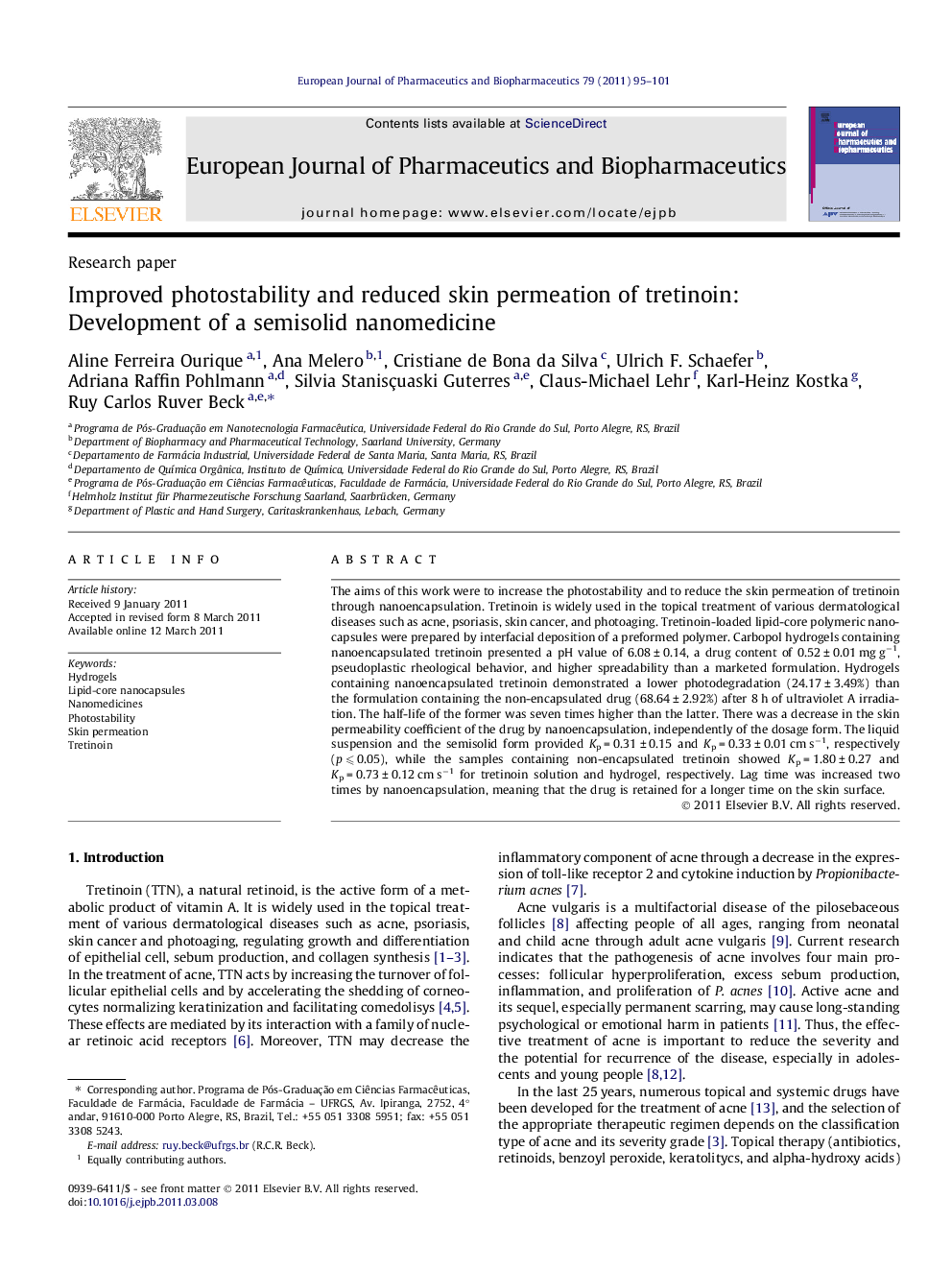| Article ID | Journal | Published Year | Pages | File Type |
|---|---|---|---|---|
| 2085443 | European Journal of Pharmaceutics and Biopharmaceutics | 2011 | 7 Pages |
The aims of this work were to increase the photostability and to reduce the skin permeation of tretinoin through nanoencapsulation. Tretinoin is widely used in the topical treatment of various dermatological diseases such as acne, psoriasis, skin cancer, and photoaging. Tretinoin-loaded lipid-core polymeric nanocapsules were prepared by interfacial deposition of a preformed polymer. Carbopol hydrogels containing nanoencapsulated tretinoin presented a pH value of 6.08 ± 0.14, a drug content of 0.52 ± 0.01 mg g−1, pseudoplastic rheological behavior, and higher spreadability than a marketed formulation. Hydrogels containing nanoencapsulated tretinoin demonstrated a lower photodegradation (24.17 ± 3.49%) than the formulation containing the non-encapsulated drug (68.64 ± 2.92%) after 8 h of ultraviolet A irradiation. The half-life of the former was seven times higher than the latter. There was a decrease in the skin permeability coefficient of the drug by nanoencapsulation, independently of the dosage form. The liquid suspension and the semisolid form provided Kp = 0.31 ± 0.15 and Kp = 0.33 ± 0.01 cm s−1, respectively (p ⩽ 0.05), while the samples containing non-encapsulated tretinoin showed Kp = 1.80 ± 0.27 and Kp = 0.73 ± 0.12 cm s−1 for tretinoin solution and hydrogel, respectively. Lag time was increased two times by nanoencapsulation, meaning that the drug is retained for a longer time on the skin surface.
Graphical abstractGraphical representation of the reduced skin permeation profile of nanoencapsulated tretinoin from hydrogels.Figure optionsDownload full-size imageDownload as PowerPoint slide
